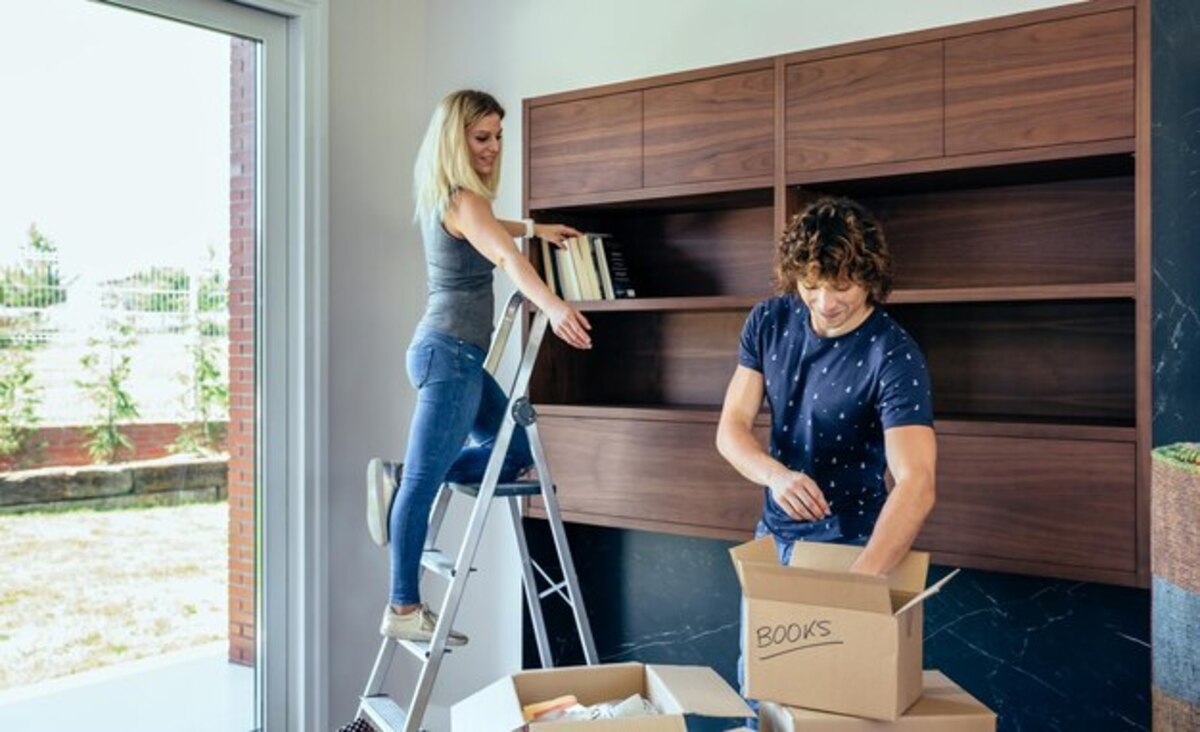Navigating Change: Preparing for a New Cozy Home

Navigating the transition to a new home can be quite a challenge, but it is also an exciting opportunity to create a cozy and vibrant space. In this article, we will guide you through essential preparations that will transform your move into a smooth and rewarding experience. From planning to decorating, you will learn how to make your new house reflect your personality and style. Get ready to turn the empty walls into a warm refuge where every corner tells a story!
1. The importance of planning before the move
Planning is the first fundamental step to ensure that your move is a success. Before packing your belongings, it is crucial to make a detailed inventory of what you really need to take with you. This will not only help you reduce the load and avoid clutter in your new home, but it will also allow you to identify items that you no longer use and that could be donated or sold. A well-organized list can facilitate the packing process and ensure that you do not forget important items, as well as provide you with a clear view of how you want to distribute your things in the new space.
Additionally, setting a realistic timeline for each stage of the moving process is essential. From finding moving providers to scheduling public services at your new address, each step requires time and attention to detail. By planning ahead, you can minimize the stress associated with unexpected surprises during the move. Consider assigning specific tasks to different days or weeks before the big day; this will allow you to approach each aspect calmly and ensure that everything is ready when the time comes to move into your cozy new home.
2. How to choose the perfect neighborhood for you
Choosing the right neighborhood is essential to ensure that your new home is not just a physical space, but also an environment where you feel comfortable and happy. Before making a decision, consider aspects such as proximity to your workplace, schools, supermarkets, and recreational areas. Research the safety of the area and the demographic characteristics that may influence your lifestyle. Social media and local forums are excellent resources to gather opinions and experiences from those who already live there; do not underestimate the power of the community when choosing your new home.
Additionally, walking around the neighborhood at different times of the day can provide you with a clearer perspective on what it’s really like to live there. Observe the interactions among neighbors, local business activity, and whether there are green spaces to enjoy the outdoors. Ask yourself if the environment aligns with your personal interests: do you prefer a quiet place or a vibrant one full of activities? In the end, the ideal neighborhood should resonate with you and offer not only a place to live, but also a community that complements your lifestyle and aspirations.
3. Essential lists for a stress-free move
To ensure a smooth move, it is essential to have well-structured lists that help you organize each stage of the process. Start by creating a list of essential tasks, including deadlines for packing, hiring moving services, and making address changes. It is also useful to have an inventory of your belongings; this will not only facilitate the packing process but also allow you to keep an accurate record of what you have and ensure that nothing is left behind in your old home. A visual checklist can be especially effective for monitoring progress and maintaining high motivation as you check off each completed task.
Also, don't forget to create specific packing lists for each room. By dividing your belongings by areas, you can focus on one space at a time, thus avoiding the overwhelming feeling of a total move. Include essential items such as clothes for the first few days, basic kitchen utensils, and essential bathroom items in a clearly labeled box as "first necessities." This will allow you to settle into your new home quickly without having to unpack all the boxes before finding what you need. With these lists on hand, you will be better prepared to enjoy the exciting journey to your new haven without the weight of stress on your shoulders.
4. Strategies for packing your belongings efficiently
Packing may seem like an overwhelming task, but with the right strategies, you can do it efficiently and in an organized manner. First, it is essential to sort your belongings before you start packing. Take the time to review each room and decide which items you want to take with you, which need to be donated, and which can be discarded. This process will not only help you reduce the number of things you need to pack, but it will also make organizing in your new home easier upon arrival. Consider using a labeling system to identify the contents of each box, which will make unpacking easier and allow you to quickly access what you need the most.
Once you have a clear idea of what you will take with you, it's time to select the appropriate materials for packing. Use boxes of different sizes and make sure to have enough cushioning material like bubble wrap or kraft paper to protect fragile items. Additionally, pack strategically: place the heavier items at the bottom of the boxes and the lighter ones on top to avoid damage. Don't forget to fill the empty spaces with clothes or towels; this not only protects your belongings but also maximizes the use of space in the boxes. By following these strategies, you can pack efficiently and turn what could be a stressful situation into a much more manageable and organized experience.
5. Initial decoration: creating a cozy atmosphere from day one
The initial decor is essential for setting the atmosphere of your new home from day one. Start by choosing a color palette that conveys warmth and comfort; soft tones like pastels or neutrals can be ideal for creating a cozy environment. As you unpack your belongings, select those decorative pieces that have special meaning to you, such as family photographs, artwork, or travel souvenirs. These elements will not only personalize your space but also bring a sense of familiarity amidst the change.
Don't forget to incorporate textures and warm lights into your initial decoration. Soft cushions, cozy blankets, and rugs can work wonders in softening the atmosphere and making it more inviting. Likewise, consider the lighting; lamps with yellow light or scented candles not only illuminate but also create a sense of well-being. By creating such an environment from the start, you will be laying the foundation for a home where every corner invites relaxation and enjoyment, turning what could be an overwhelming experience into a new adventure full of possibilities.
6. Getting to know your new neighbors: tips for quickly integrating
Integrating into a new neighborhood may seem intimidating at first, but it is a crucial step to truly feeling at home. Start by introducing yourself to your neighbors informally; a smile and a friendly greeting can open many doors. If you have the opportunity, organize a small gathering or invite some neighbors over for coffee or a snack. This will not only allow you to get to know the people around you, but it will also give them the chance to get to know you better and share common interests. Additionally, participating in community activities can be an excellent way to establish meaningful connections. Find out about local events such as fairs, markets, or neighborhood meetings. These gatherings are ideal for socializing and creating bonds with those who share your environment. Don't forget to get involved in groups or associations that align with your passions; whether it's a book club, yoga classes, or sports groups, these experiences are perfect for making friends and feeling like an active part of your new community.
Finally, maintaining an open and friendly attitude will facilitate the adaptation process. Listening to the stories and traditions of your new neighbors will not only enrich you culturally but also foster a genuine sense of belonging. Remember that every interaction is an opportunity to learn something new and build lasting relationships that will make your life in the new home even more rewarding. With the right time and effort, you will soon feel like an integral part of the neighborhood and be able to fully enjoy the new chapter you have begun.
7. Functional spaces: optimizing every corner of your new home
When it comes to optimizing your new home, every corner counts. The key is to make the most of the available space, no matter how small or large it is. Start by evaluating areas that are often overlooked: corners, under the stairs, or even behind doors. Use floating shelves to display books and decorative items, or consider installing multifunctional furniture that offers additional storage. A sofa bed in the living room is an excellent option for hosting guests, while tables with compartments will help you maintain order and organization in small spaces. Each element should be a combination of functionality and style, ensuring that your home is not only cozy but also practical.
Also, think about how you can integrate smart solutions that make your daily life easier. For example, hanging organizers in closets and wardrobes allow you to maximize vertical space, freeing up valuable floor areas. Make sure to assign a specific place for each item; this not only improves the aesthetics of the home but also reduces the time spent searching for lost things. Don't forget to include plants and natural elements in your optimized corners; they bring freshness and vitality to any environment. With a mindful approach to functional spaces, you will transform your new home into a sanctuary where every square meter is designed to provide you with comfort and satisfaction.
8. Incorporating personal memories into home decor
Incorporating personal memories into your home decor is one of the most effective ways to make a space feel truly yours. The items you have collected over the years, such as family photographs, travel souvenirs, or art created by friends and loved ones, can add character and warmth to each room. By carefully choosing which elements to include, you can tell your story through design and create an environment that is not only welcoming but also meaningful. For example, displaying a photo collage on a wall can be the perfect focal point to spark conversations and reminisce about special moments with your loved ones.
In addition to photographs, consider integrating other types of mementos, such as inherited furniture or crafts that hold sentimental value. These elements not only add personality to your space but also serve as tangible reminders of past experiences. You can combine antique pieces with modern decorations to create an interesting contrast that reflects both your roots and your contemporary style. Don't be afraid to experiment: creating a corner dedicated to your memories allows each visit to your home to be a nostalgic and unique experience while contributing to the overall sense of belonging in this new chapter of your life.
9. Emotional adaptation: managing the stress of change
Moving to a new home can trigger a mix of emotions, from excitement to stress. Adapting to this change involves recognizing and managing those feelings of uncertainty that may arise. It is essential to take time to process the emotions that come with leaving behind a familiar place. Allow yourself to feel nostalgia, but also seek moments of joy while imagining what your new life in this space will be like. Practicing self-empathy and reflecting on your emotional needs will help you establish a solid foundation to face the challenges that may arise during this transition.
It is also important to have effective tools to manage the stress associated with change. Activities like meditation, exercise, or even dedicating a few minutes each day to writing in a journal can be very helpful. Creating daily routines in your new home can also provide emotional stability; for example, setting schedules for meals or family activities helps create a predictable and comforting environment. Remember that every step you take towards adaptation not only transforms your physical home but also strengthens your emotional well-being as you navigate this exciting chapter of your life.
10. Maintaining the connection with your old home while adapting to the new.
Maintaining a connection to your old home is essential to ease the transition to a new space. Often, the change can evoke feelings of nostalgia and uprooting, so it is important to find ways to honor the memories and experiences lived in your previous residence. An effective way to do this is by integrating elements that remind you of your old home into the decor of your new house. Whether it's a painting you cherished, family photographs, or that special piece of furniture that has been with you for years, these items can bring a sense of familiarity and comfort as you adjust to your surroundings.
Also, consider creating a corner in your new home that celebrates your roots. This space can include meaningful mementos, such as books, travel souvenirs, or even a small collection of items that reflect significant moments in your life. By dedicating a specific place for these memories, you will not only keep the connection to the past alive, but also transform that corner into a personal refuge where you can reflect and recharge. Remember that every home has its own story; by combining the old with the new, you will be creating a unique narrative that will make your new house a truly cozy home.



